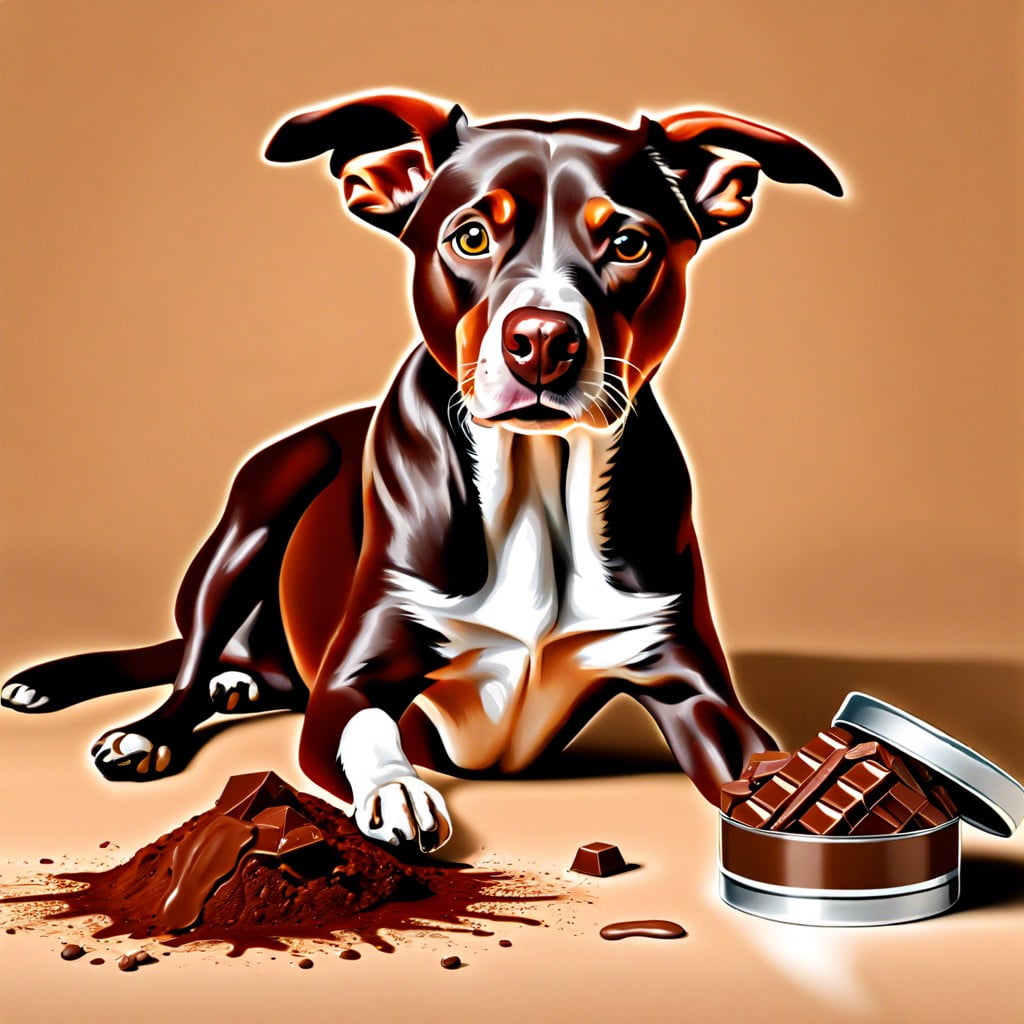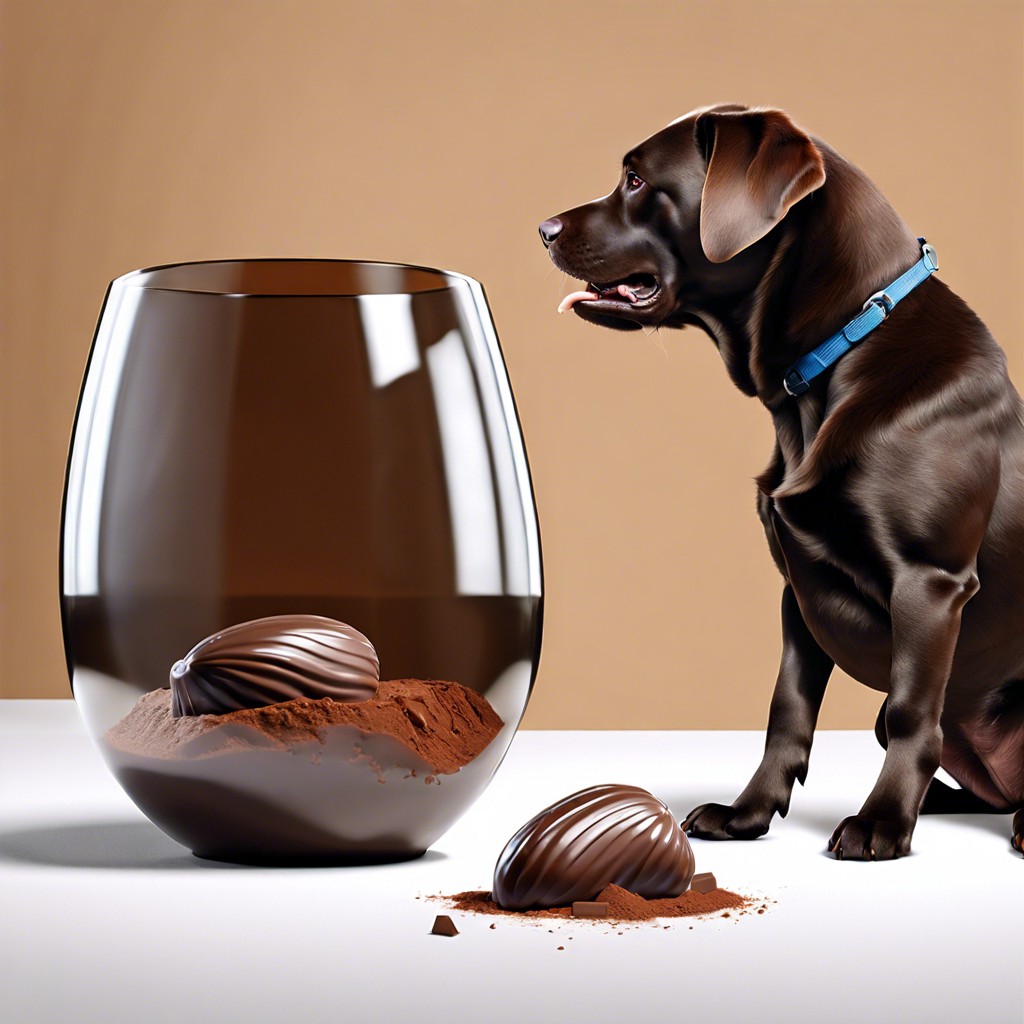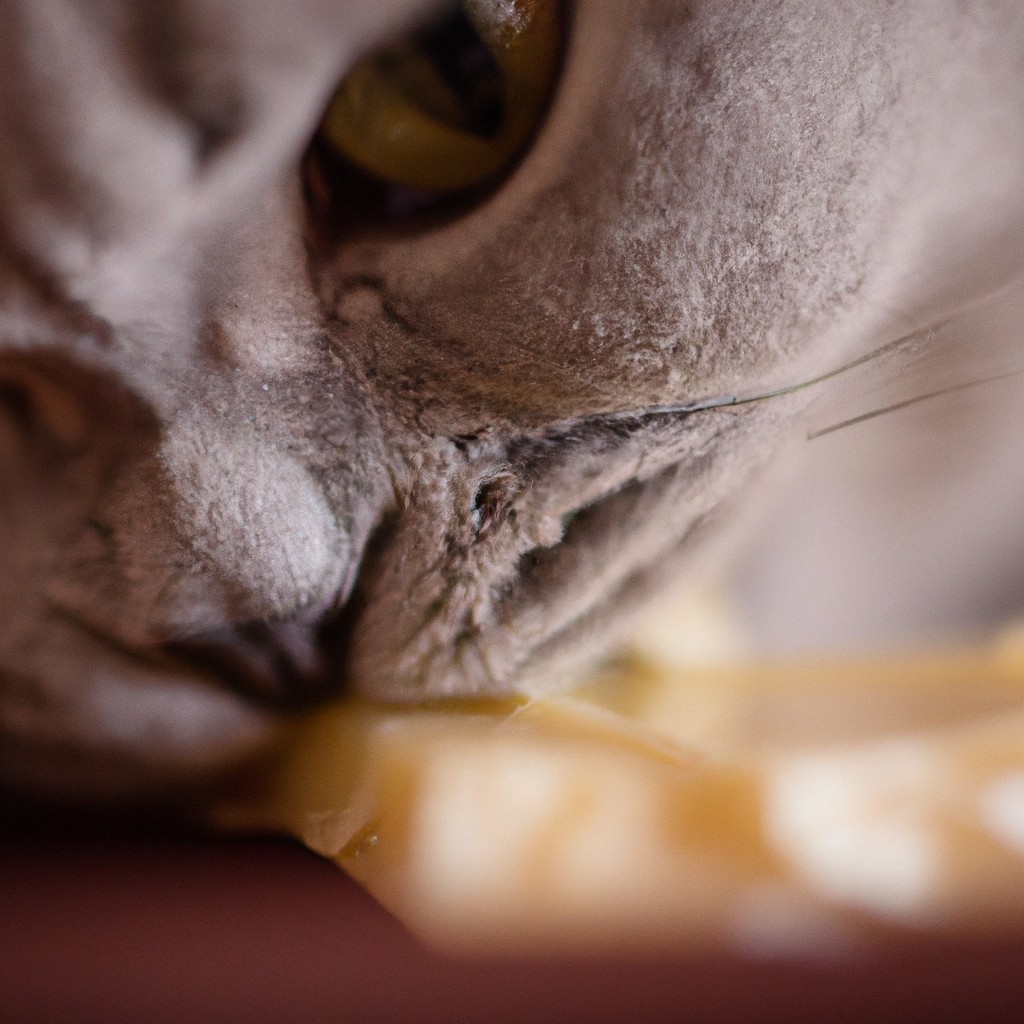If your dog has ingested chocolate 24 hours ago, it’s crucial to understand the potential risks and immediate steps to take, which this article will detail.
Key takeaways:
- Stay calm and ensure your pet’s safety
- Remove any remaining chocolate
- Identify the quantity and type of chocolate consumed
- Look for symptoms of chocolate poisoning
- Contact your veterinarian immediately and follow their instructions
Inside
Immediate Actions to Take After Chocolate Ingestion

If a dog consumes chocolate, quick assessment and action are essential due to the theobromine present in chocolate, which is toxic to dogs. Here’s what to do:
1. Stay Calm: Panic can cloud judgement. Ensure the safety of your pet by remaining composed.
2. Remove Chocolate: Ensure no additional chocolate is within reach to prevent further ingestion.
3. Identify Quantity and Type: Determine how much and what kind of chocolate was eaten. Darker, purer chocolates and cocoa powder are more dangerous.
4. Check Symptoms: Look for signs of chocolate poisoning, which may include restlessness, vomiting, diarrhea, rapid breathing, and seizures.
5. Consult Your Vet: Contact your veterinarian immediately with the information on hand. They will need to know your dog’s size, the type of chocolate consumed, and the approximate quantity ingested.
6. Follow Professional Advice: Your vet may instruct you to induce vomiting or come to the clinic. Follow their instructions carefully.
7. Keep Emergency Numbers Handy: Have contact information for your vet and local emergency clinics accessible.
8. Monitor Your Dog: Even after initial actions, keep an eye on your dog for any delayed symptoms and report these to your vet.
Assessing the Amount and Type of Chocolate Consumed
Determining the specifics of chocolate exposure is critical in evaluating the risk to your pet. The toxicity level varies greatly between dark chocolate, milk chocolate, and white chocolate due to differing concentrations of theobromine and caffeine—dark chocolate and cocoa powder being the most hazardous.
Take note of your dog’s size as well; smaller breeds may experience toxic effects from smaller quantities. Should packaging be available, it provides valuable information regarding cocoa percentage and weight, useful for veterinary assessment.
Record the estimated time of ingestion, as this influences treatment options. Always keep chocolate products out of reach to minimize risks to your dog’s health.
Veterinary Diagnosis and Treatment Options
Veterinarians typically begin with a thorough physical examination to assess the dog’s condition and may perform diagnostic tests such as blood work or an electrocardiogram (ECG) to evaluate heart function. Based on the severity of chocolate toxicity, treatments may include:
- Inducing Vomiting: If the ingestion was recent, a vet might induce vomiting to remove as much chocolate from the stomach as possible.
- Administration of Activated Charcoal: This substance binds to toxins and helps prevent absorption in the bloodstream.
- Intravenous Fluids: Fluid therapy can aid in dehydration and help to flush the toxins out through the kidneys.
- Medications: Depending on symptoms, medications may be used to manage heart rate, blood pressure, or seizures.
- Monitoring: Continuous monitoring may be necessary for severe cases, including heart monitoring and follow-up tests to check for any organ damage.
Prompt veterinary care enhances the prognosis and can significantly mitigate the risks associated with chocolate poisoning in dogs.
How to Prevent Future Accidental Chocolate Ingestion
Safeguarding your home against pet-accessible chocolate is crucial for their wellbeing. Utilize high storage spaces for all chocolate and cocoa products, ensuring they are not within your dog’s reach.
Invest in containers with secure lids to store sweets. Remember to remind family members and guests about the dangers of sharing chocolate with dogs, and consider designating dog-safe treat areas away from where chocolate is consumed or stored.
When hosting gatherings, keep a vigilant eye on desserts and inform your guests about keeping chocolate out of paw’s reach. Lastly, regular training can help reinforce commands that prevent your dog from ingesting harmful items.
When to Seek Emergency Care
If your dog displays any of these symptoms after eating chocolate, contact a veterinarian immediately:
- Excessive thirst or urination, indicating potential kidney damage
- Rapid or irregular heartbeats, hinting at cardiovascular issues
- Vomiting or diarrhea that persists, leading to dehydration
- Restlessness or hyperactivity, which can precede seizures
- Seizures or tremors, a sign of severe toxicosis
These are clear indicators of chocolate poisoning. The sooner a dog receives veterinary care, the better the chances of a full recovery. Always keep emergency contact information for your local veterinary clinic or an animal poison control center readily available.




